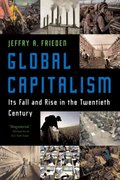Question
. Suppose that policies that would sharply reduce global greenhouse gas emissions(mainly CO2) would cost one trillion dollars per year over each of the next
- . Suppose that policies that would sharply reduce global greenhouse gas emissions(mainly CO2) would cost one trillion dollars per year over each of the next 25 years,and that these reduced emissions would provide estimated ecological and economicbenefits equal to $100 billion in 10 years, and growing $10 billion in each year afterthat until annual benefits reach $1 trillion per year, and then remain at $1 trillionper year indefinitely thereafter. This schedule of costs and benefits is illustrated infigure 1 below. Assume these values are real, inflation-adjusted projections.
a) Describe how one ought to go about accounting for these costs and benefits over time in order to discern whether the overall benefits exceed the overall costs.
(b) Suppose a discount rate of 2% were applied to both costs and benefits, whichis roughly OMB's current guideline for very long-run benefits and costs. Usingthis discount rate, what is the present value of costs? What is the present value of benefits? Are the policies worthwhile? (NOTE: You will need to usea computer to make these calculations. You may use a spreadsheet program like Excel or other software you may prefer.
(c) repeat exercise (b) for each of the following discount rates: 1% for both costs and benefits, 5% for both costs and benefits, 7% for both costs and benefits.
(d) Suppose you are unsure about which discount rate is most appropriate. Is it better to err by using a rate that is too low or one that is too high? In otherwords, if the unknown "true" discount rate should be one number, but youuse a number in your benefitcost analysis that is randomly different from thetruth, do you make a larger error in terms of the net present value if you usea discount rate that is too low or a discount rate that is too high? How mightthis matter?

Step by Step Solution
There are 3 Steps involved in it
Step: 1

Get Instant Access to Expert-Tailored Solutions
See step-by-step solutions with expert insights and AI powered tools for academic success
Step: 2

Step: 3

Ace Your Homework with AI
Get the answers you need in no time with our AI-driven, step-by-step assistance
Get Started


